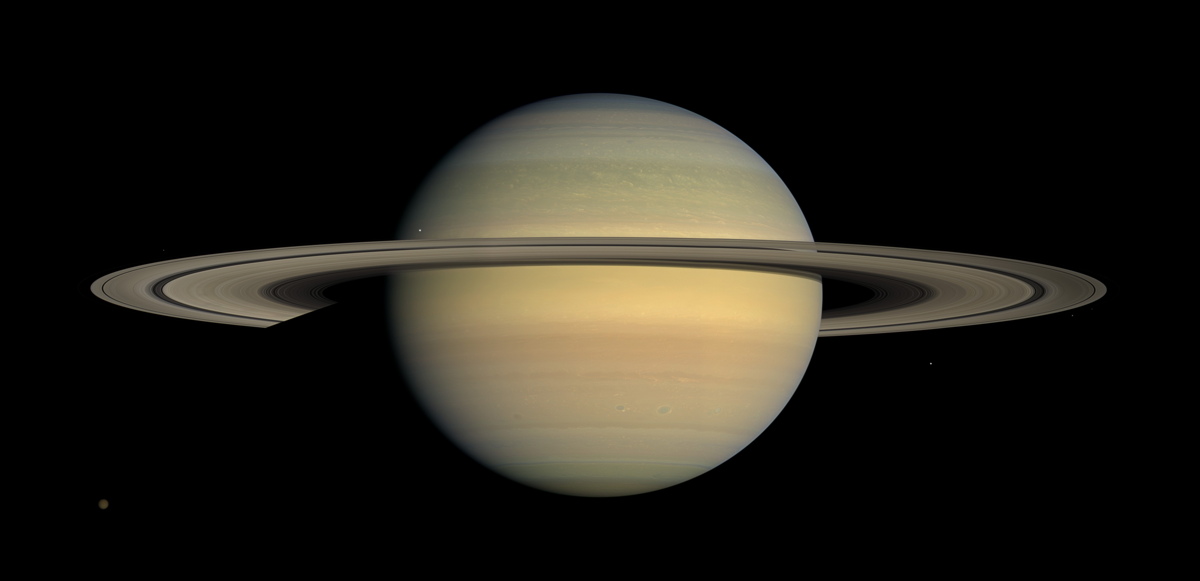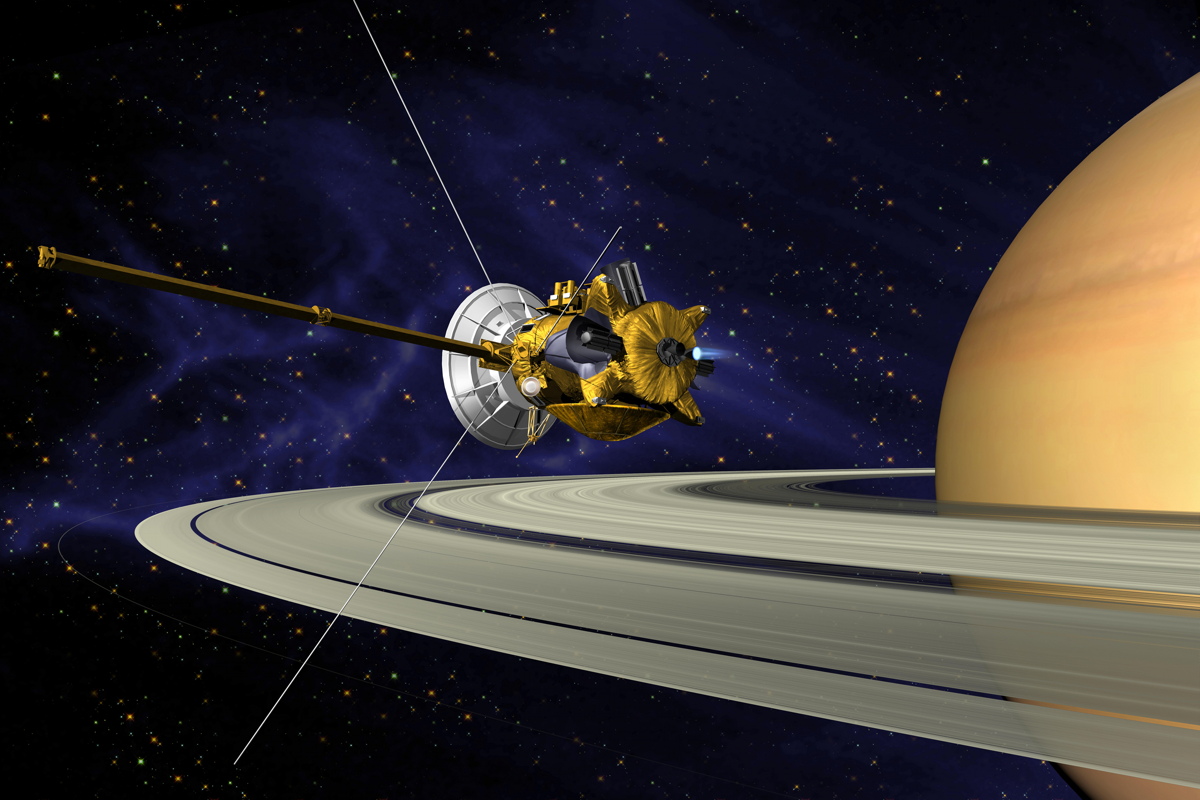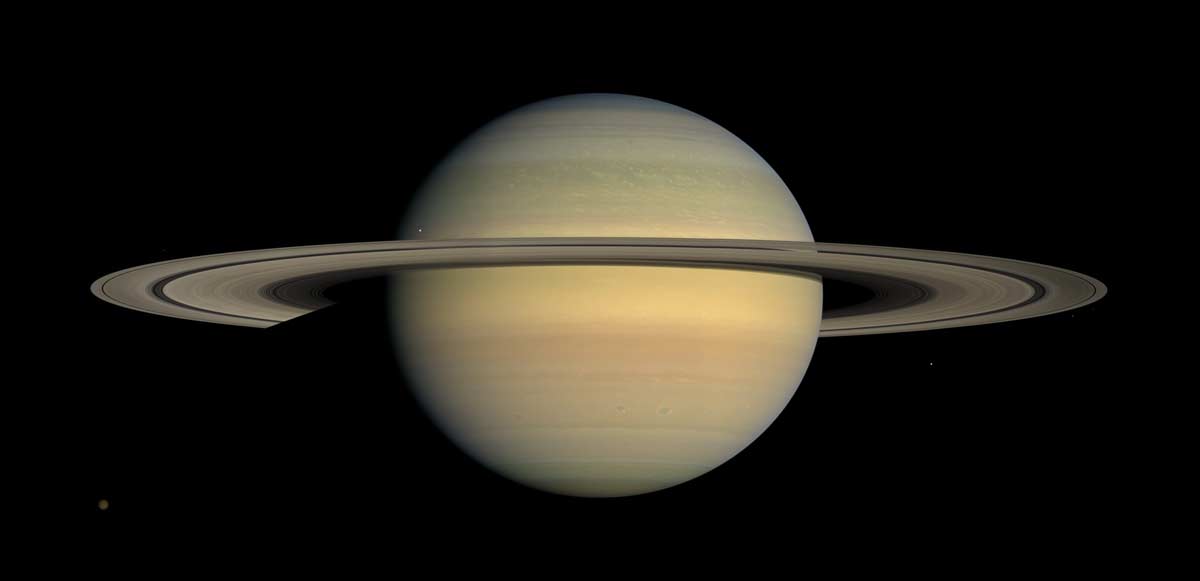Length of Saturn's Day Measured Like Never Before

Setting your daily schedule on Saturn could be more challenging than you might think.
Measurements taken by NASA's Cassini spacecraft have shown that the ringed planet might have a longer day than originally calculated from measurements taken by the Voyager 2 probe more than 20 years earlier. In an effort to pin down Saturn's rotation period more accurately, a group of scientists took a mathematical approach to the planet, relying on measurements of its gravitational field.
"While an uncertainty of 15 minutes may appear small compared to the approximately 10.5-hour rotation of Saturn, it is actually important to know [the rotation] accurately," lead scientist Ravit Helled, of Tel Aviv University in Israel, told Space.com via email. "The rotation period has an important effect on understanding Saturn's atmosphere dynamics and internal structure." [See photos of the planet Saturn]
The rotation mystery
When Voyager 2 visited Saturn in 1981, the probe measured the planet's rotation period at about 10 hours, 39 minutes. But when Cassini first arrived at the planet in the early 2000s, it determined Saturn spun once on its axis every 10 hours and 47 minutes, and those numbers changed each time Cassini took a look.
Gas giant planets like Saturn lack solid land masses that could help determine how quickly a planet spins, so scientists have to fall back on other approaches. Voyager and Cassini relied on measurements of the planet's radio radiation, but because those measurements shifted with each observation, they proved unreliable.
Radio radiation isn't the only method for studying the rotation of a gas giant. For planets where the magnetic field is tilted in relation to the axis the planet rotates around, measurements of the magnetic field can reveal how quickly the planet spins. However, Saturn's magnetic field lines up with its rotation axis, which prevents scientists from relying on that measure.
A third option involves measuring how long it takes for a cloud in Saturn's atmosphere to travel around the planet. But the rotation of the atmosphere doesn't necessarily line up with the rotation of the planet, making this method challenging.
Get the Space.com Newsletter
Breaking space news, the latest updates on rocket launches, skywatching events and more!
Helled and her team decided to instead take a more mathematical approach to determining how quickly Saturn spins. The team searched for solutions for the rotation period by using coefficients to represent the interior, then searched for the rotation period that the most solutions calculated.
"We did not want the derived period to be associated with a specific internal structure, so we accounted for many possibilities within their physical range," Helled said. "There are many solutions, but it was found that they tend to give a similar rotation period." [Take our Saturn quiz]
The theoretical estimate returned a rotation of almost 10 hours, 33 minutes. This is "in very good agreement with previous estimates that used different methods," Helled said.
The results were published online today (March 25) in the journal Nature.

Testing the theory
The newly returned calculation relied on studies of the planet's well-defined gravitational field. As Cassini traveled around the planet, it measured the tug of Saturn on the spacecraft, determining the strength or weakness of the gravitational pull. Although the gravitational field changes based on differences in the interior, the team's mathematical approach allowed for many possibilities for the interior, all of which reproduce the data measured for the gravitational field.
"The advantage of our method is that it is not associated with a specific interior model for Saturn, does not rely on the cloud-tracking wind properties that have large variability, and allows for the large range of solutions constrained by the measured physical properties of the planet and their uncertainties," Helled said.
The team also used measurements of the planet's oblateness to determine their solution. Oblateness refers to the fact that spinning bodies are almost never perfect spheres; the faster they whirl, the more they bulge around the equator. Saturn is rather thick around the middle, more than even Jupiter, which could indicate a fast spin. However, Helled pointed out that winds also affect oblateness, so strong winds around the equator could lead to a bigger bulge.

The new, precise estimates of Saturn's rotation period should help scientists study the structure and interior of the planet. This will provide insights into the conditions present in the protoplanetary disk that formed the solar system, as well as the formation process of gas giants. It could also help to improve understanding of atmospheric dynamics.
"Such a rotation period for Saturn implies that the latitudinal wind structure is more symmetric, containing both easterly and westerly jets, like we see on Jupiter," Helled said.
Follow us @Spacedotcom, Facebook and Google+. Original article on Space.com.
Join our Space Forums to keep talking space on the latest missions, night sky and more! And if you have a news tip, correction or comment, let us know at: community@space.com.

Nola Taylor Tillman is a contributing writer for Space.com. She loves all things space and astronomy-related, and enjoys the opportunity to learn more. She has a Bachelor’s degree in English and Astrophysics from Agnes Scott college and served as an intern at Sky & Telescope magazine. In her free time, she homeschools her four children. Follow her on Twitter at @NolaTRedd









